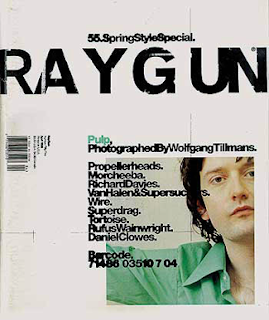
Neville Brody was born on the 23rd April in 1957 in London. Neville Brody is an English graphic design, art director and typographer. In 1980, Brody started designing for a magazine called “The Face”, and did his last design in 2004 because the magazine was no longer going to be on sale. In 1985, Brody did some re-designs for the logo CND (the peas sign). Neville Brody was using a variety of different lettering; he re-designed the alphabet. And continues to design different styles of lettering today. Brody has done poster designs and the structure of magazine articles. His work is very modern and up to date, I like his style because he makes the article interesting to read and it looks affective to the eye, e.g. bright colours and large fonts. Neville Brody is still producing affective work to this day.
This is a CD cover It is a man tied up and blindfolded.
It is a man tied up and blindfolded.
He's not used much colour but with it being black and white it looks really effective.
- I like how he used the turquoise colour for the name of the song, because it draws your eye to it.
I like how Brody put the bands website page on the cover.
This is one of he own re-designed Albert's
 It's bold.
It's bold.It's got a funky look to it .
I like how he's shown us the style in capital letters and lower case litters.
Some of the letters remind me of cut outs for example the "E" and "F".
He's also shown us how this style would look in numbers and symbols .
This is a front cover of The Face magazine

It looks affective because of the colour's he has used, the peach/orange colour goes really well with the black and white.
I think that the title looks really affective because the "A" is an triangle.
I think what also makes this affective is that there's an image of a boy on the front cover and he looks to me the he is very serious.
There's not too much writing on the front, but where Brody has placed it text it blends in with the image.








